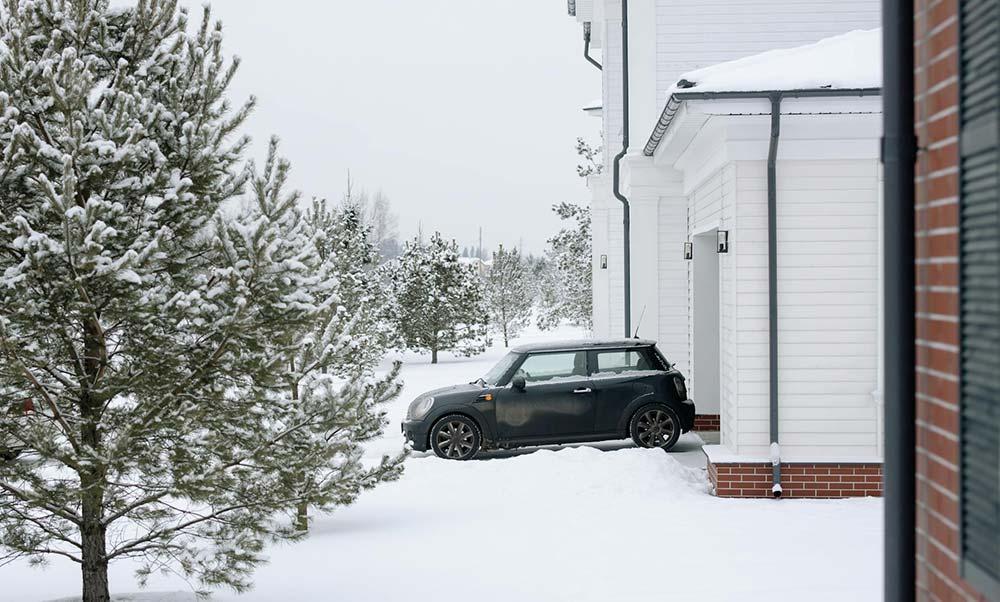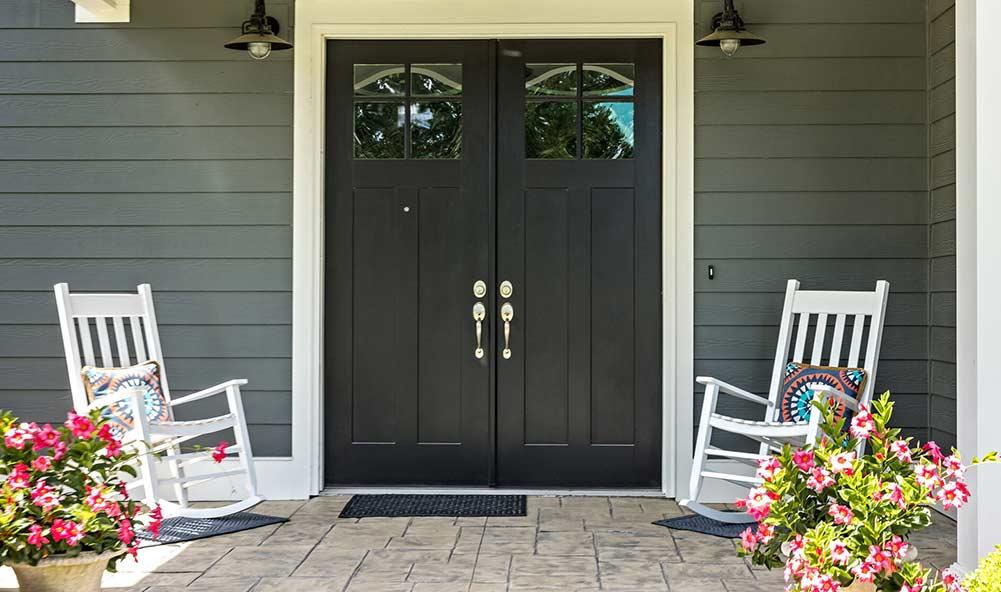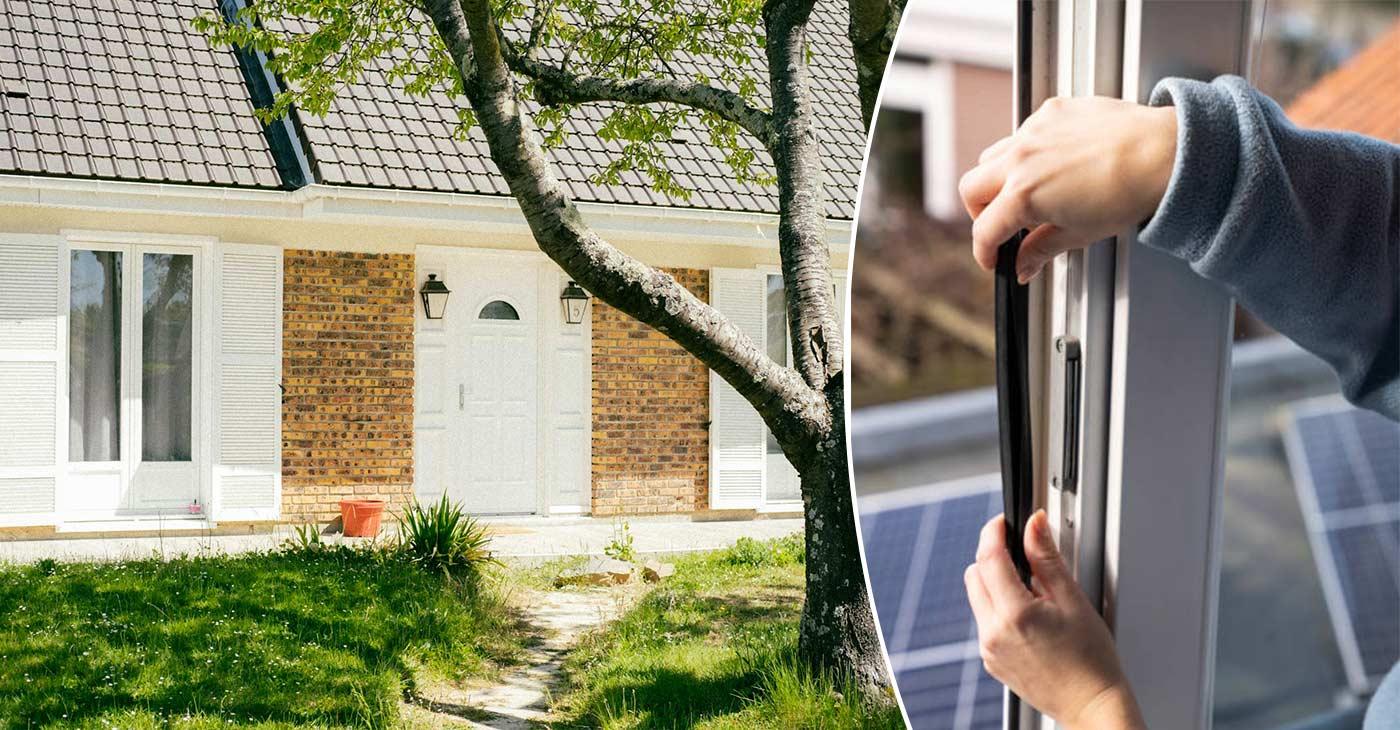Table of Contents
Weather Stripping for The Bottom of Doors
The weather stripping for the bottom of doors is an urgent part of keeping up with energy productivity and indoor solace. It comprises different materials, like rubber or vinyl introduced along the base edge of ways to seal holes and prevent air, dampness, and pests from entering or getting away.
The door weather stripping structures are tightly sealed when the entryway is shut, assisting with diminishing drafts, commotion, and energy misfortune. Also, it assists with safeguarding floors from water harm and forestalls the penetration of residue, dust, and bugs into indoor spaces.
By further improving insulation and sealing holes, weather stripping for the bottom part of entryways adds to bringing down energy bills, increases solace, and a better indoor climate.
Weather stripping materials for door bottoms vary in price: foam and felt are budget-friendly, typically under $10 for standard lengths, making them accessible for limited budgets. Rubber and vinyl fall into the mid-range category, costing between $10 and $20, offering a balance of performance and cost.
High-end options like silicone and EPDM range from $20 to $40, reflecting their superior durability and sealing capabilities. Metal strips, depending on their combination with other materials, can vary widely but usually fall between $15 and $30, suitable for moderate to higher budgets. Read more at Gummilist.com.
Insulating Door Bottom Strip
An insulating doorway base strip is a practical solution for sealing the hole between the lower part of an entryway and the floor, successfully preventing drafts, air leaks, and energy loss. This strip is regularly produced using materials like rubber, vinyl, or foam, which give protection and adaptability.
At the point when introduced along the base edge of an entryway, the insulating strip shapes a tight seal when the doorway is shut, assisting with keeping up with indoor temperatures and further developing energy proficiency. One of the critical advantages of a protecting entryway base strip is its capacity to decrease warming and cooling costs by keeping adapted air from getting away and outside air from penetrating indoor spaces.
By making an obstruction against drafts, the strip assists with guaranteeing a more agreeable climate and lessens the responsibility for warming and cooling frameworks.
Moreover, insulating door bottom strips can likewise assist with shutting out dampness, residue, and bugs, adding to a cleaner and better indoor climate. They are accessible in different sizes and can be effortlessly managed to fit different entryway widths, making them a flexible and practical answer for further developing protection and lessening energy expenses in homes and structures.
In general, insulating weather stripping for the bottom of doors is a fundamental part of energy-productive structure practices and can give long-haul advantages to homeowners and occupants.

Draught Excluder for The Bottom of Doors
A draught excluder for entryways is a fundamental frill for keeping up with energy effectiveness and further developing solace in homes and structures. It is a basic yet powerful gadget intended to keep drafts from entering through the hole underneath doors.
Normally made of sturdy materials like foam, rubber, or fabric, draught excluders make a seal along the base edge of the entryway when it is shut, obstructing cold air from entering and warm air from getting away. This assists with decreasing heat loss during colder months, prompting lower energy charges and expanded indoor solace.
Besides further developing energy proficiency, draught excluders likewise help to upgrade in general solace by preventing drafts and cold spots close to entryways. They can likewise add to sound decrease by making a boundary against outer sounds.
Draught excluders are accessible in different sizes, shapes, and plans to fit different door types and decor styles. They are not difficult to introduce and can be a financially savvy answer for mortgage holders hoping to further improve insulation and diminish energy waste. By and large, draught excluders assume an important part in making a more energy-effective, agreeable, and economical indoor climate.
Function of Weatherproofing for The Doors
The weather stripping for the bottom of doors functions as weatherproofing, safeguarding homes and buildings from different harmful elements and keeping up with indoor solace. By sealing holes, breaks, and openings around entryways, weatherproofing prevents water penetration, air leaks, and drafts.
This is commonly achieved using weather stripping, door sweeps, and caulking.Weatherproofing assists with forestalling dampness harm, mold growth, and structural deterioration by keeping rain, snow, and moistness out of indoor spaces. It further improves energy proficiency by decreasing air spillage and keeping molded air from getting away and outside air from entering.
This prompts lower energy charges and expanded solace for tenants. Furthermore, weatherproofing upgrades security by making a tight seal and can assist with decreasing noise pollution, making a calmer and more serene indoor climate.
Generally speaking, weatherproofing for entryways is a basic yet successful method for safeguarding structures and improving their performance and life span.
In addition to these measures, door stops and door closers at the bottom act as important complements in the world of weather protection, helping to keep the door closed and further seal the indoor environment from weather elements.
For the Swedish market, visit Dorrstopp.com for more information. For the European market, visit https://www.so-tech.eu/door-stopper/ for more information.
Bottom Door Insulation
Bottom door insulation is a vital component of energy-productive homes and structures. It includes introducing protecting materials along the base edge of doors to prevent heat loss, drafts, and air invasion. Commonly made of materials like elastic, vinyl, or foam, base entryway protection makes a tight seal when the entryway is shut, limiting the trading of air between indoor and outdoor spaces.
This assists with keeping up with steady indoor temperatures, diminishes energy utilization, and lowers warming and cooling costs. Bottom door insulation likewise assists with shutting out dampness, residue, and vermin, further developing indoor air quality and solace.
By upgrading protection and sealing holes, bottom door insulation adds to a more agreeable, energy-productive, and practical living climate. Normal examination and support of base entryway protection are essential to guarantee ideal execution and proficiency.

Benefits of Using Weather Stripping for The Bottom of Doors
Energy Efficiency
The weatherstripping structures provide hindrance against drafts, keeping cold air from entering and warm air from escaping during colder months. On the other hand, it assists in keeping cool air inside and hot air outside in warmer climates.
By reducing air leakage, weather stripping assists with stabilizing indoor temperatures, prompting lower warming and cooling costs. This adds to energy conservation and sustainability efforts.
Comfort Enhancement
Appropriately introduced weather stripping establishes a more agreeable indoor climate by limiting drafts and temperature varieties close to entryways. It likewise diminishes commotion transmission, assisting with making a calmer indoor space, particularly in regions with high external noise levels.
Enhanced Durability
The weather stripping for the bottom of doors assists with safeguarding entryways, floors, and surrounding building materials from harm brought about by exposure to dampness, bugs, and outside components. By broadening the life expectancy of these parts, weather stripping adds to the long-term durability and value of structures.
Reduced Maintenance
Structures with compelling weather stripping require less regular maintenance and repair because of reduced moisture infiltration, pest entry, and harm. This means lower support costs and less margin time for repairs, permitting building owners to productively allocate resources.
Protection Against Moisture and Water
Weatherstripping assists with fixing holes underneath entryways, preventing dampness, rain, and snow from penetrating inside. This is especially significant in districts inclined to heavy precipitation or flooding. By keeping dampness out, weather stripping assists with preventing water harm to floors, rugs, and other inside surfaces.
Prevention of Pest Infiltration
Gaps underneath entryways can act as entry points for pests and insects. Weatherstripping seals these holes and reduces the probability of pest infestations. The weather stripping for the bottom of doors blocks access to insects and helps in keeping a perfect and hygienic indoor climate.
Protection of Indoor Air Quality
Weatherstripping helps with preventing outdoor harmful substances from entering indoor spaces. This is especially helpful for people with sensitive or respiratory circumstances. By further developing indoor air quality, weather stripping upholds occupant well-being and prosperity.
Preservation of Building Integrity
Appropriately introduced weather stripping assists with safeguarding the underlying trustworthiness of structures by diminishing the invasion of dampness, air, and vermin. It likewise assists with preventing twisting, enlarging, and harm to doorways, floors, and encompassing structure materials brought about by exposure to the elements.
Types of Weather Stripping for The Bottom of Doors
Door Sweeps
Door Sweeps Are Adaptable Strips Attached to The Lower Part of Doors to Seal the Hole Between the Doorway and The Threshold. They Commonly Include a Brush, Rubber, or Vinyl Seal that Adjusts to Uneven Surfaces. Door Sweeps Are Effective at Blocking Drafts, Dampness, and Pests While Taking Into Account Smooth Door Operation.
Bottom Door Seals
Bottom Door Seals, Otherwise Called Door Gaskets or Entryway Bottoms, Are Flexible or Adaptable Strips Connected to The Base Edge of Entryways. They Give a Tight Seal Against the Limit when The Entryway Is Shut. These Seals Are Accessible in Different Materials, Including Rubber, Vinyl, and Aluminum, Which Can Be Effectively Managed to Fit Different Entryway Sizes.
Threshold Seals
Threshold Seals Are Introduced on The Edge or Threshold Underneath the Way to Prevent Air and Water Penetration. They Give a Solid Boundary Against Drafts and Dampness, Particularly in Outside Entryways. the Weather Stripping for The Bottom of Doors Functions as Seals and Comes in Various Profiles, Including Bulb Seals, Pressure Seals, and Balance Seals, to Oblige Different Door Designs.
Door Bottom Insulation
Door Bottom Insulation Comprises Foam or Elastic Strips Attached to The Lower Part of Doors to Give Warm and Climate Protection. These Strips Compress when The Entryway Is Shut, Forming a Tight Seal. Entryway Base Protection Assists with Limiting Heat Loss, Drafts, and Noise Transmission While Further Developing Energy Effectiveness and Solace.
Summary – Why Is Weather Stripping for The Bottom of Doors Being Used?
Weatherstripping for The Lower Part of Doorways Is a Cost-Effective and Practical Solution for Improving Energy Efficiency, Comfort, and Durability in Buildings. Incorporating Materials Like Epdm, It Seals Gaps and Blocks Drafts, Moisture, and Pests from Entering Indoors.
This Contributes to Creating a More Sustainable and Comfortable Indoor Environment While Protecting the Integrity of The Building. Investing in High-Quality Weather Stripping Can Result in Significant Energy Savings, Reduced Maintenance Costs, and Improved Occupant Satisfaction Over the Long Term.





